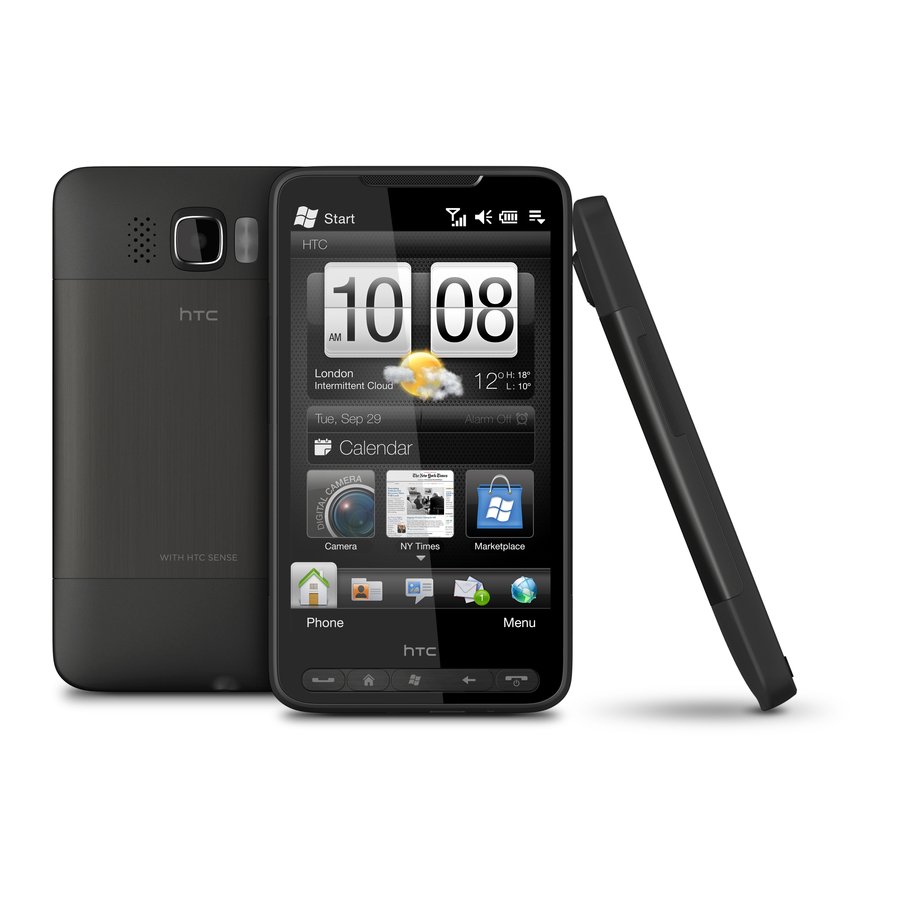HTC HD2 Quick Start Manual - Page 37
Browse online or download pdf Quick Start Manual for Cell Phone HTC HD2. HTC HD2 44 pages. Lcd & touch screen repair
Also for HTC HD2: User Manual (31 pages), Quick Start Manual (44 pages), Repair Manual (4 pages)

WARNING: Danger of explosion if battery is incorrectly
replaced. To reduce risk of fire or burns, do not
disassemble, crush, puncture, short external contacts,
expose to temperature above 0° C (10° F), or dispose
of in fire or water. Replace only with specified batteries.
Recycle or dispose of used batteries according to the
local regulations or reference guide supplied with your
product.
•
Take extra precautions
•
Keep the battery or device dry and away from water or any
liquid as it may cause a short circuit.
•
Keep metal objects away so they don't come in contact with the
battery or its connectors as it may lead to short circuit during
operation.
•
The phone should only be connected to products that bear the
USB-IF logo or have completed the USB-IF compliance program.
•
Do not use a battery that appears damaged, deformed, or
discolored, or the one that has any rust on its casing, overheats,
or emits a foul odor.
•
Always keep the battery out of the reach of babies and small
children, to avoid swallowing of the battery. Consult the doctor
immediately if the battery is swallowed.
•
If the battery leaks:
•
Do not allow the leaking fluid to come in contact with skin
or clothing. If already in contact, flush the affected area im-
mediately with clean water and seek medical advice.
•
Do not allow the leaking fluid to come in contact with eyes.
If already in contact, DO NOT rub; rinse with clean water
immediately and seek medical advice.
•
Take extra precautions to keep a leaking battery away from
fire as there is a danger of ignition or explosion.
SAFETY PRECAUTIONS FOR DIRECT SUNLIGHT
Keep this product away from excessive moisture and extreme
temperatures. Do not leave the product or its battery inside a vehicle
or in places where the temperature may exceed 0°C (10°F), such
as on a car dashboard, window sill, or behind a glass that is exposed
to direct sunlight or strong ultraviolet light for extended periods of
time. This may damage the product, overheat the battery, or pose a
risk to the vehicle.
Quick Start Guide
